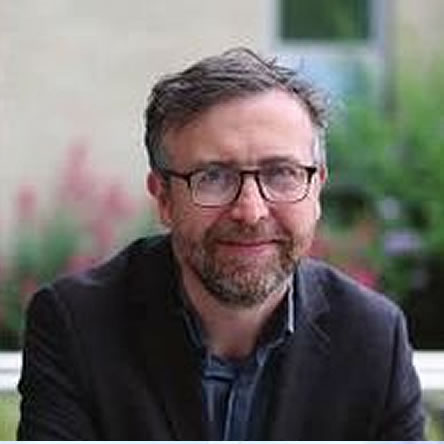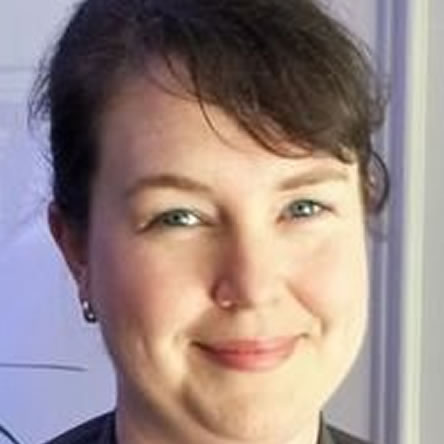Work Environment
This occupation is typically found in the following Career Sector(s):
Videos on the Web
- IT Scientist- from: Youtube Search
Most commonly reported Work Activities
- Interacting With Computers Using computers and computer systems (including hardware and software) to program, write software, set up functions, enter data, or process information.
- Making Decisions and Solving Problems Analysing information and evaluating results to choose the best solution and solve problems.
- Getting Information Observing, receiving, and otherwise obtaining information from all relevant sources.
- Updating and Using Relevant Knowledge Keeping up-to-date technically and applying new knowledge to your job.
- Analysing Data or Information Identifying the underlying principles, reasons, or facts of information by breaking down information or data into separate parts.
- Thinking Creatively Developing, designing, or creating new applications, ideas, relationships, systems, or products, including artistic contributions.
- Documenting/Recording Information Entering, recording, storing, or maintaining information in written or electronic/magnetic form.
- Processing Information Compiling, coding, categorising, calculating, tabulating, auditing, or verifying information or data.
- Identifying Objects, Actions, and Events Identifying information by categorising, estimating, recognising differences or similarities, and detecting changes in circumstances or events.
- Communicating with Supervisors, Peers, or Subordinates Providing information to supervisors, co-workers, and subordinates by telephone, in written form, e-mail, or in person.
Working Life

Most commonly reported Work Tasks
- Analyse problems to develop solutions involving computer hardware and software.
- Apply theoretical expertise and innovation to create or apply new technology, such as adapting principles for applying computers to new uses.
- Assign or schedule tasks to meet work priorities and goals.
- Meet with managers, vendors, and others to solicit cooperation and resolve problems.
- Design computers and the software that runs them.
- Conduct logical analyses of business, scientific, engineering, and other technical problems, formulating mathematical models of problems for solution by computers.
- Evaluate project plans and proposals to assess feasibility issues.
- Participate in multidisciplinary projects in areas such as virtual reality, human-computer interaction, or robotics.
- Consult with users, management, vendors, and technicians to determine computing needs and system requirements.
- Develop and interpret organisational goals, policies, and procedures.
Interests - IT Scientist
This occupation is typically suited for people with the following Career Interests:
Investigative
The Investigative person will usually find a particular area of science to be of interest. They are inclined toward intellectual and analytical activities and enjoy observation and theory. They may prefer thought to action, and enjoy the challenge of solving problems with sophiscticated technology. These types prefer mentally stimulating environments and often pay close attention to developments in their chosen field.
Realist
Realists are usually interested in 'things' - such as buildings, mechanics, equipment, tools, electronics etc. Their primary focus is dealing with these - as in building, fixing, operating or designing them. Involvement in these areas leads to high manual skills, or a fine aptitude for practical design - as found in the various forms of engineering.
Realists like to find practical solutions to problems using tools, technology and skilled work. Realists usually prefer to be active in their work environment, often do most of their work alone, and enjoy taking decisive action with a minimum amount of discussion and paperwork.
Administrative
Administrative people are interested in work that offers security and a sense of being part of a larger process. They may be at their most productive under supervisors who give clear guidelines and while performing routine tasks in a methodical and reliable way.
They tend to enjoy clerical and most forms of office work, where they perform essential administrative duties. They often form the backbone of large and small organisations alike. They may enjoy being in charge of office filing systems, and using computers and other office equipment to keep things running smoothly. They usually like routine work hours and prefer comfortable indoor workplaces.
Entry / Progression - IT Scientist
Computer Scientists are scientists and mathematicians who develop new ways to process, understand, store, communicate, and secure data.
Sample Education and Training Pathways
A number of courses are available throughout the country that focus on learning and skills that may be useful for this career. The examples and links below may guide you in your research.
Further Education (FET)
Further Education & Training (FET) Courses are delivered by local ETBs, ranging in duration from several weeks up to 20 months. Courses are designed to meet the labour market needs and often include a large element of work experience.
Example search terms include: software development, ICT systems and principles, IT.
Search for FET Courses
PLC Courses (FET)
PLC courses are full-time courses, one or two years duration, with awards at Level 5 and 6 on the NFQ. They are offered nationally in Schools and Colleges of Further Education.
Example search terms include: computer games programming, programming, software development, games design, development, apps, games, network architecture, computer science.
Search for PLC Courses
Apprenticeships:
Apprenticeships are structured work-based training programs that combine on-the-job training with classroom instruction. They run from 2 – 4 years and are open to individuals of all ages, including school leavers, those seeking a career change, and existing employees who wish to upskill.
Examples: Software Development Associate, Equipment Systems Engineer, ICT Cybersecurity, ICT Network Engineer, ICT Software Developer, Manufacturing Data Integration Engineer, Software Solutions Architect, Telecommunications and Data Network Technician.
Search for Apprenticeships
Higher Education CAO (Undergraduate)
Higher Education courses at Levels 6 to 8 on the NFQ, delivered in Universities and Technological Universities & Institutes. Courses run from 2 – 5 years and places are allocated on a points-based system, processed by the Central Application Office.
Example search terms include: arts, computer science, business studies, computational thinking, maths, philosophy, science, maths, computer science with education.
Search for CAO Courses
ICT Conversion courses are also available via Springboard, at NFQ level 6-9 search Springboard courses
Higher Education (Postgraduate)
Postgraduate courses are courses at Levels 9 and 10 on the NFQ and usually last 1 – 2 years full time, or longer if a PhD or part time. Entrants typically require an undergraduate award (Level 8).
Example search terms include: software design and development, software design with artificial intelligence, software design with virtual and augmented reality, applied computer networks, computer and communications systems, computer science, computer science and statistics, research, applied.
Search for Postgraduate Courses
Professional Development
Professional development (CPD) courses are specialised training, formal education, or advanced professional learning that improves skills, professional knowledge, competency, and overall effectiveness in the professional world.
Check the Useful Contacts tab on this page to see if there are any professional bodies listed who may provide training related to this career.
Pay & Salary - IT Scientist
Salary Range (thousands per year)* €65k - €120k
Salaries vary based on employer, location, experience, duties, and role.
Data Source(s):
Brightwater / CPL / Morgan McKinley/ Indeed
Last Updated: April, 2023
Labour Market Updates - IT Scientist
Note: The following information relates to occupations that include: Programmers and software development professionals.
This information has been derived from the Solas National Skills Bulletin (2024).
Although employment growth was above average for this occupation, employment levels declined in 2023, returning to 2021 levels (but remaining far above pre-COVID-19 levels). At 47%, this occupation has the second highest share of non-Irish citizens employed (alongside chefs, with the highest share for butchers). Only one fifth were female and over three quarters were employed in the ICT sector.
Over 1,800 new permits were issued in 2023, a decline of 2,500 on 2022 and accounting for over half of the decline in permits issued for this occupational group. Despite a large fall in the number of online job adverts (Eurostat/CEDEFOP) compared to the previous year, this occupation still accounted for the fourth largest share in 2023. There was a relatively high volume of difficult-to-fill mentions in the Recruitment Agency Survey (various developer roles) and employer data (Skills for Growth, Spotlight on Skills) highlighted issues sourcing VR developers, junior software developers, computer programmers and those with skills in cyber security, AWS and tech development stack.
There are some signs of a slowdown in demand and hirings in this occupation after the significant expansion in the ICT sector in recent years. However, demand continues, both in the ICT sector and across all sectors in the economy, with shortages likely to persist for the foreseeable future.
Useful Contacts - IT Scientist
-
Irish Computer Society
-
Smart Futures
- Discover Science & Engineering, Wilton Park House, Wilton Place, Dublin, 2
-
- Click Here
-
FIT Fastrack into IT
- FIT ltd Unit 2C Donnybrook Commercial Centre Donnybrook, Douglas, Cork
- 021 242 8755
- [email protected]
- Click Here


















